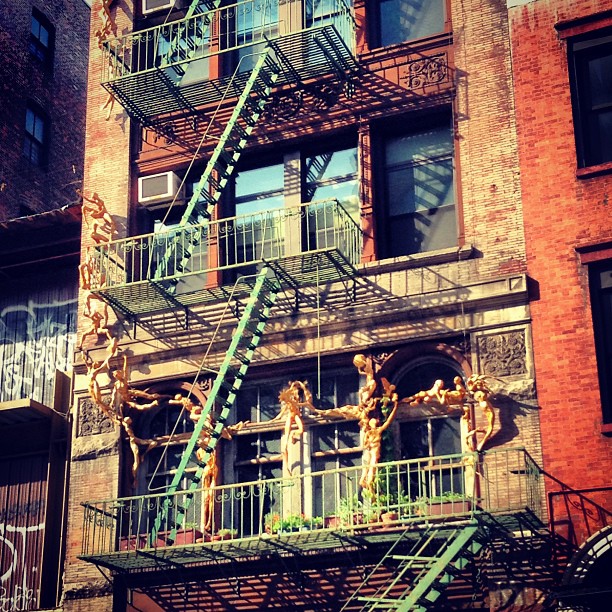While many think that external fire escape stairs are solely used to prevent danger or even death, they can also be the cause of it if not maintained, repaired, or inspected properly. Just this month, a man from New York fell victim to falling tread/step from an external fire escape during a routine wall inspection. While this exterior fixture was in compliance with maintenance laws, which required a check every 5 years, it still proved to be faulty. Both the property owner and the directive were cited for this issue, as the owner failed to report the fixture in a timely manner, and the directive did not practice proper protocol during the inspection, namely blocking off the sidewalk/space below to prevent by-passers from being hit by falling debris.
It is important to upkeep fire escape maintenance even if there is not a formal routine inspection scheduled for that year. While this is not encouragement to physically go out on the structure and perform repairs, as that should be left to professional inspectors, there are some ways that property owners and residents can monitor the quality of their fire escape structures:
-Keep an eye on the structure. Visual signs of wear can include chipped paint, cracks in the structure, wobbly fixtures, and missing pieces of the structure. These can all be seen without venturing out on to the structure and should be reported to either the landlord or inspection company as soon as possible.
-Additionally, if you endure any extreme weather, including ice/snow storms, tornadoes, or earthquakes, it is in good practice to ensure that any external fixtures, namely stairs and fire escape routes, are intact after the event by calling an inspector out for a professional evaluation. -Comply with the required maintenance timeline. As stated before, the structure mentioned in the article was under a 5-year inspection timeline. With the previous inspection being done in 2013, the 2018 appointment was considered on time, though it proved to be that the structure had reached a hazardous state beforehand. Maintenance timelines show the projected end of a “safe” period but are flexible and residents/property owners should be vigilant in examining external fixtures on a regular basis and reporting any inconsistencies or changes.
In response this particular event, the property owners have opted to hire fire guards, who are professionals that will help direct residents out of the structure in the event of a fire or emergency while the external fixtures undergo the fire escape restoration process. When relying on internal fire escape structures such as fire escape stairs, it is equally as important to ensure that those escape routes are properly maintained and inspected, and free from any clutter or barricades that could prohibit safe exit during an emergency.
In conclusion, it is the responsibility of residents, property owners, and professional inspectors to work collectively to ensure that emergency escape structures are properly maintained. The most important steps to take in this process are keeping an eye on the structure for any visual damage (especially after extreme weather), reporting any inconsistencies, and conducting best practices during repair, including blocking off the ground area below. While internal fire escape stairs and fire guards will provide help in the event of a fire, it is most important to get out of a space quickly during these events, and external fire escape measures that are safe are most important to have to ensure a quick, safe escape.


